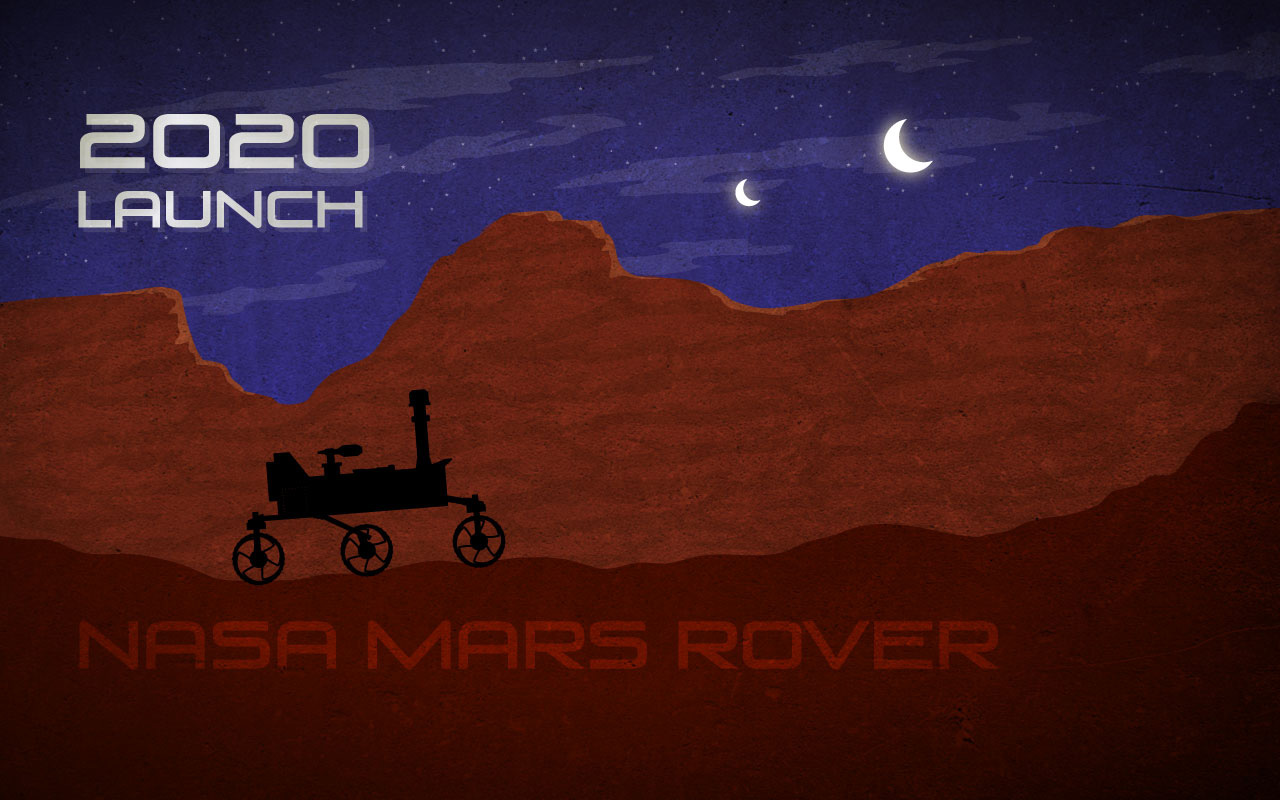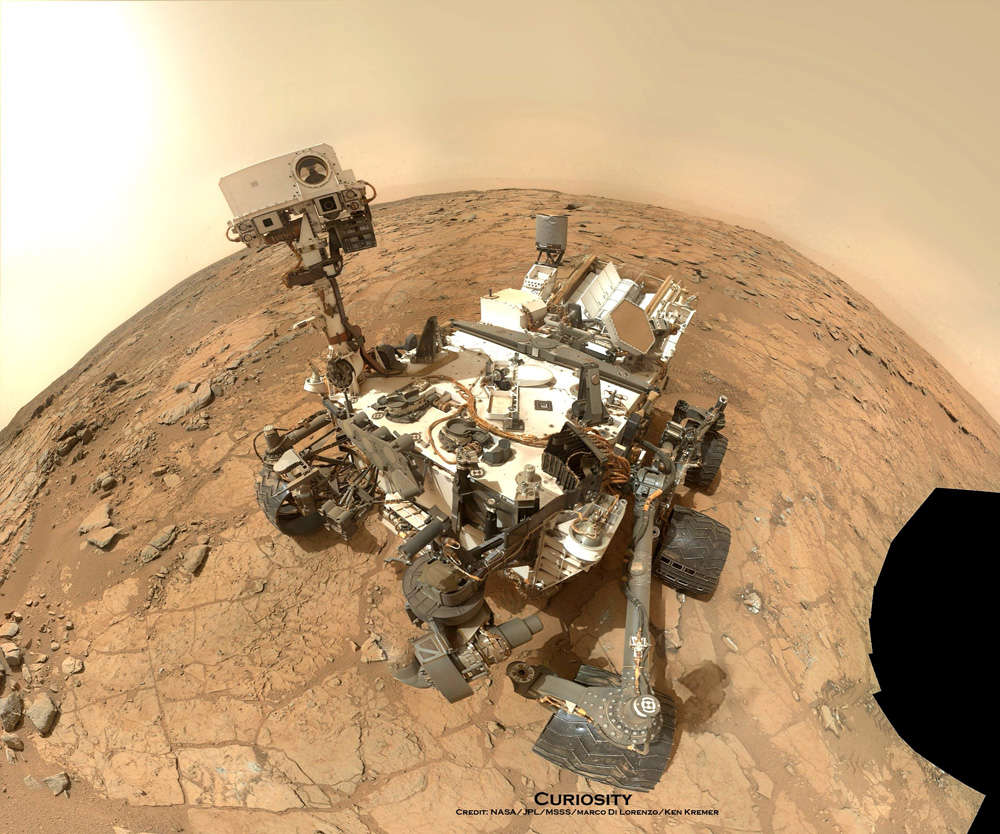NASA Will Discuss 2020 Mars Rover Launch Today: How to Listen Live

Editor's Note: For our updated story on NASA's new 2020 rover mission and and how it will seek evidence of life on Mars, read: NASA's Next Mars Rover Will Search for Signs of Life
NASA officials will discuss plans for the next big U.S. rover to land on Mars, a car-sized robot slated to launch toward the Red Planet in 2020.
During a teleconference today at 3 p.m. EDT (1900 GMT), scientists will "provide details about a report that will help define science objectives for the agency's next Mars rover," NASA officials said in an announcement.
You can follow the Mars 2020 teleconference live on SPACE.com here, courtesy of NASA.
"The report, prepared by the Mars 2020 Science Definition Team (SDT) NASA appointed in January, is an early, crucial step in developing the mission and the rover's prime science objectives," NASA officials added. [Boldest Missions to Mars of All Time]

NASA's Mars 2020 rover is a solar-powered robot expected to be based heavily on the agency's Mars Science Laboratory mission, which landed the $2.5 billion Curiosity rover on the Martian surface in August 2012.

Curiosity is a 1-ton rover about the size of a Mini Cooper car that is equipped with 12 different science instrument sets, including a suite of cameras, a mast-mounted laser and a drill on its robotic arm. The huge rover landed on Mars in a completely new way, using a rocket-powered sky crane to hover over the Martian surface while Curiosity itself was lowered to the ground on cables. Mars 2020 is expected to use a similar system.
Get the Space.com Newsletter
Breaking space news, the latest updates on rocket launches, skywatching events and more!
Because of the Mars 2020 rover's anticipated similarity in design to Curiosity, the new robot is expected to cost about $1.5 billion, significantly less than its predecessor, NASA officials have said.
"Designed to advance high-priority science goals for Mars exploration, the mission would address key questions about the potential for life on Mars," NASA officials explain in a mission description. "The mission would also provide opportunities to gather knowledge and demonstrate technologies that address the challenges of future human expeditions to Mars."
Several key NASA Mars exploration officials will speak during today's Mars 2020 science briefing. They are:
- John Grunsfeld, NASA's associate administrator for science, Washington
- Jim Green, director, Planetary Science Division, NASA Headquarters, Washington
- Jack Mustard, SDT chair and professor of geological sciences, Brown University, Providence. R.I.
- Lindy Elkins-Tanton, SDT member and director of the Carnegie Institution for Science's Department of Terrestrial Magnetism, Washington
The Mars 2020 rover is one of several NASA missions aimed at the Red Planet currently under development.
Later this year, NASA will launch the Mars Maven orbiter to study the Martian atmosphere in unprecedented detail. In 2016, the U.S. space agency will launch the Mars InSight lander to drill deep into the Martian surface.
The European Space Agency, meanwhile, is working with Russia on its ExoMars missions to launch an orbiter and rover to Mars in 2016 and 2018, respectively. India is also planning to launch its first Mars orbiter in the upcoming years.
Meanwhile, NASA's Curiosity rover and Opportunity rover are currently exploring the surface of Mars while spacecraft from NASA and the European Space Agency orbit the Red Planet.
Email Tariq Malik at tmalik@space.com or follow him @tariqjmalik and Google+. Follow us @Spacedotcom, Facebook and Google+. Original article on SPACE.com.
Join our Space Forums to keep talking space on the latest missions, night sky and more! And if you have a news tip, correction or comment, let us know at: community@space.com.

Tariq is the Editor-in-Chief of Space.com and joined the team in 2001, first as an intern and staff writer, and later as an editor. He covers human spaceflight, exploration and space science, as well as skywatching and entertainment. He became Space.com's Managing Editor in 2009 and Editor-in-Chief in 2019. Before joining Space.com, Tariq was a staff reporter for The Los Angeles Times covering education and city beats in La Habra, Fullerton and Huntington Beach. In October 2022, Tariq received the Harry Kolcum Award for excellence in space reporting from the National Space Club Florida Committee. He is also an Eagle Scout (yes, he has the Space Exploration merit badge) and went to Space Camp four times as a kid and a fifth time as an adult. He has journalism degrees from the University of Southern California and New York University. You can find Tariq at Space.com and as the co-host to the This Week In Space podcast with space historian Rod Pyle on the TWiT network. To see his latest project, you can follow Tariq on Twitter @tariqjmalik.









